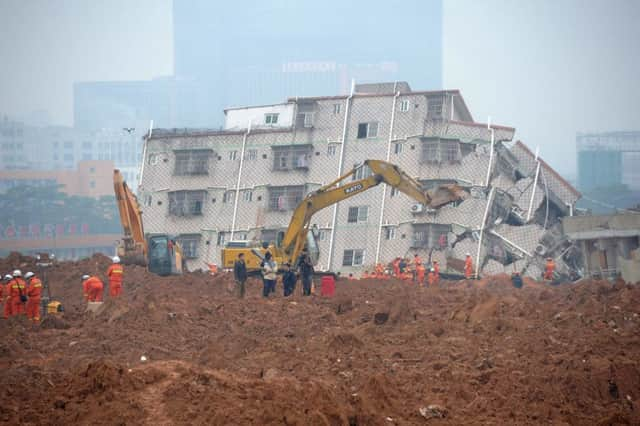Search continues for 85 people buried by landslide


Authorities said the landslide buried or damaged 33 buildings in the industrial park in Shenzhen, a city near Hong Kong that makes products used around the world ranging from mobile phones to cars.
Residents blamed the government while officials cited human error, with one ministry saying: “The pile was too big, the pile was too steep.”
Advertisement
Hide AdAdvertisement
Hide AdThe landslide covered an area of 380,000 square metres with silt ten metres deep.
At least 16 people were taken to hospital, including children, the official Xinhua News Agency said.
The Shenzhen government said seven trapped people had been rescued and 85 others remained missing on last night. Earlier in the day it had said 91 people were missing and seven rescued, but it gave no explanation for the change in numbers. No deaths have been reported.
The landslide is the fourth major disaster to strike China in a year following a deadly New Year’s Eve stampede in Shanghai, the capsizing of a cruise ship in the Yangtse River and a massive explosion at a chemicals warehouse in Tianjin on the coast near Beijing.
Human error has been suspected or confirmed in all three cases, pointing to an often callous attitude towards safety in China despite the threat of harsh penalties.
In Sunday’s landslide, the Ministry of Land and Resources said a steep man-made mountain of dirt, cement chunks and other construction waste had been piled up against a hill over the past two years.
Heavy rains in the region saturated the soil, making it heavy and unstable, and ultimately causing it to collapse with massive force.
“The pile was too big, the pile was too steep, leading to instability and collapse,” the ministry said, adding that the original, natural hill remains intact.